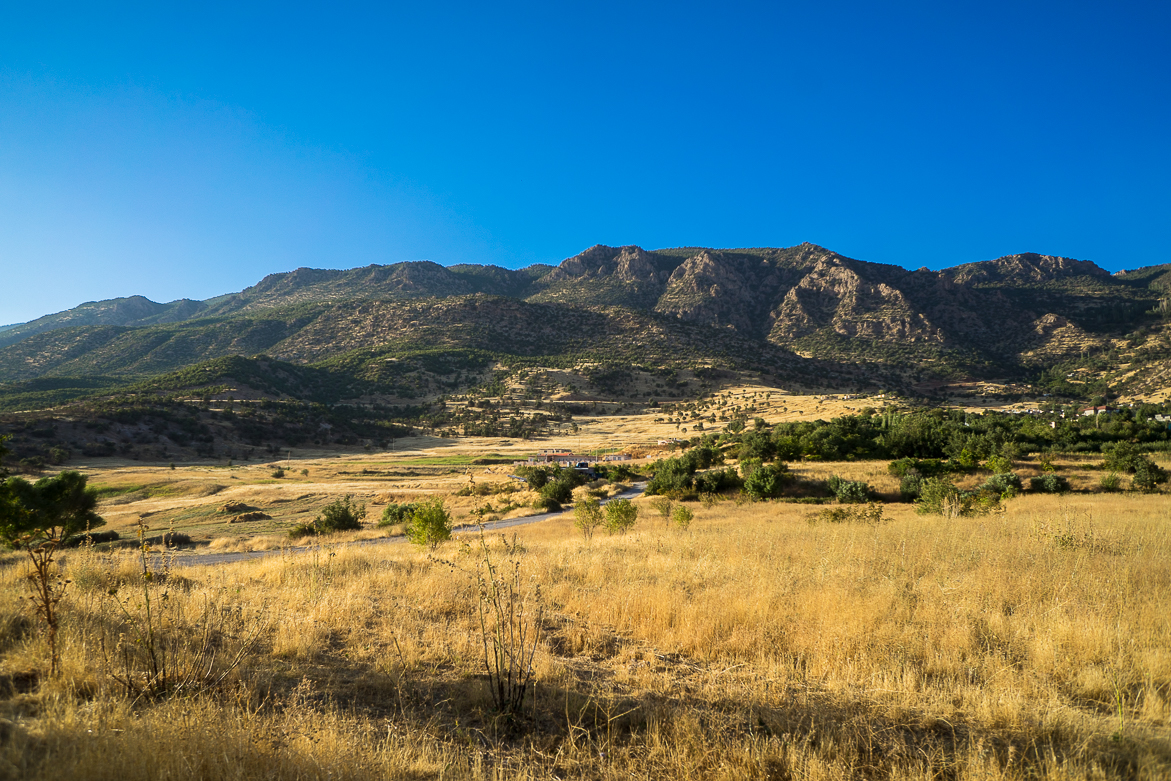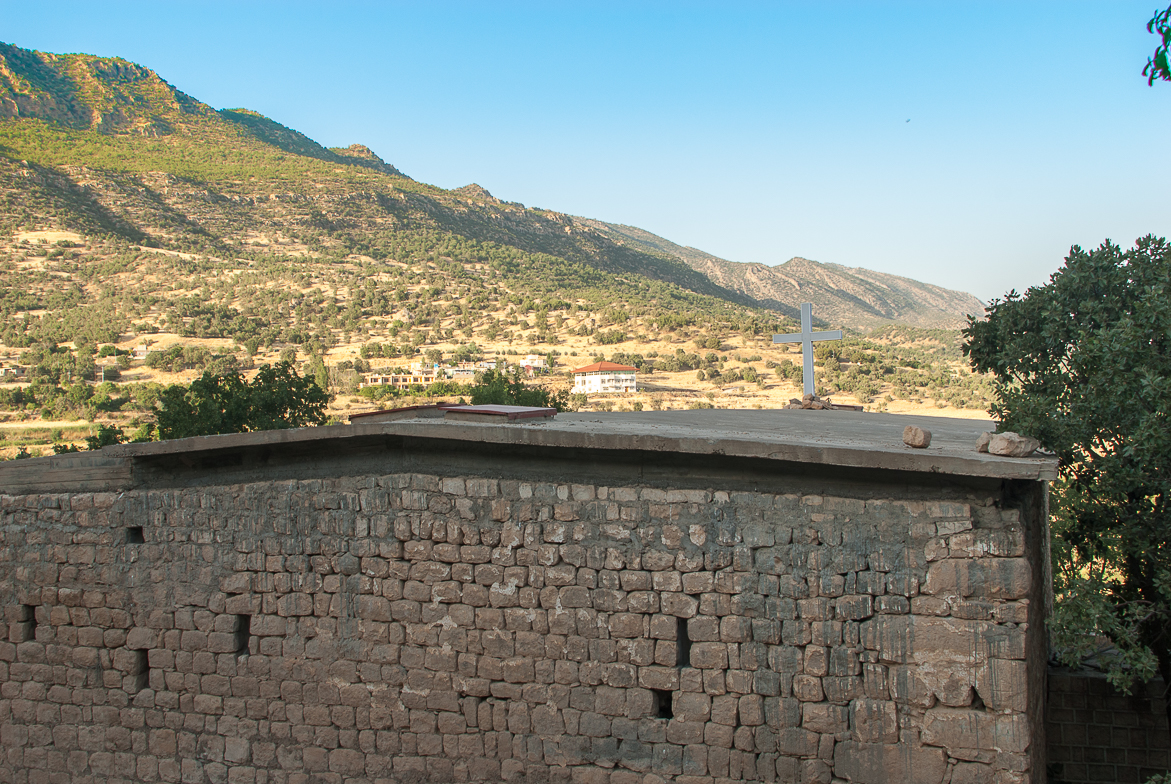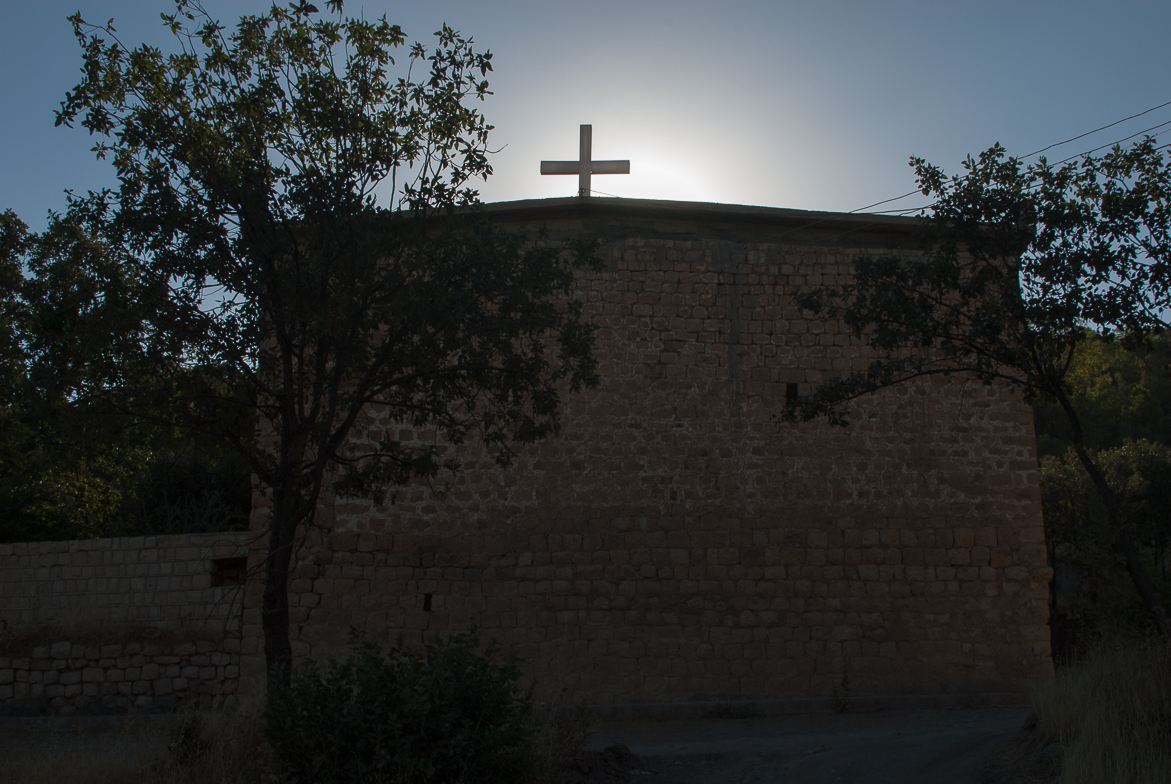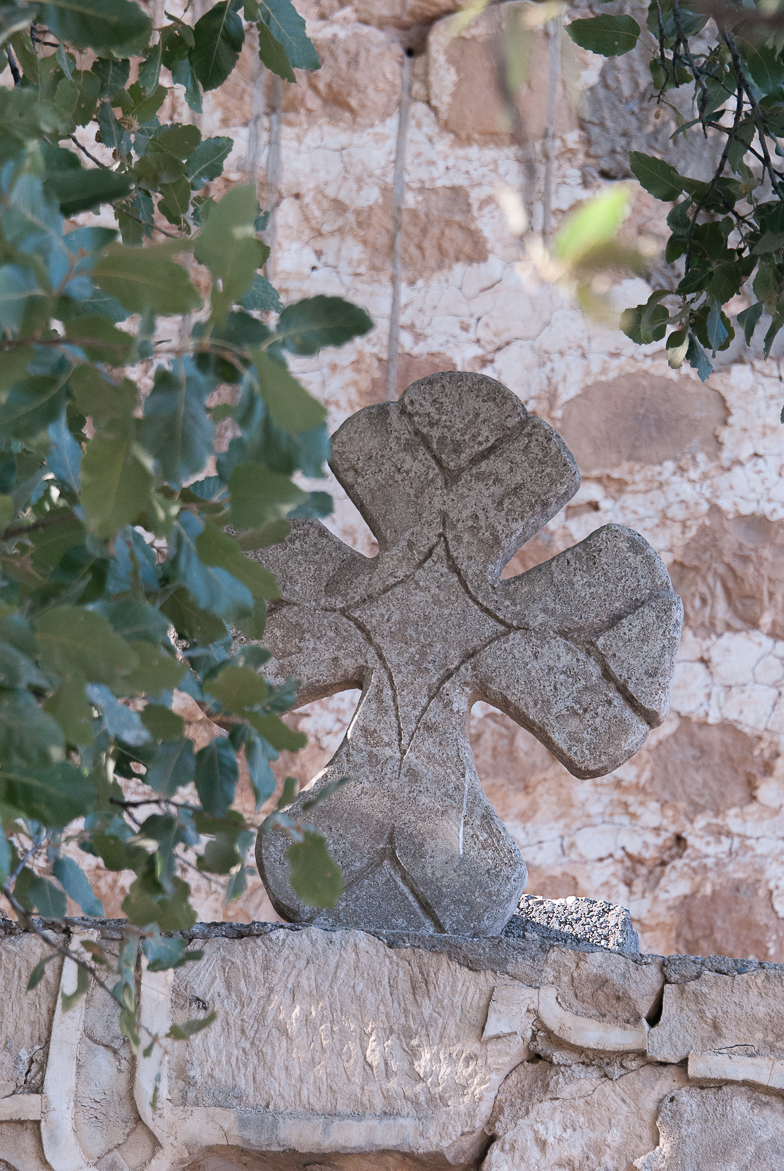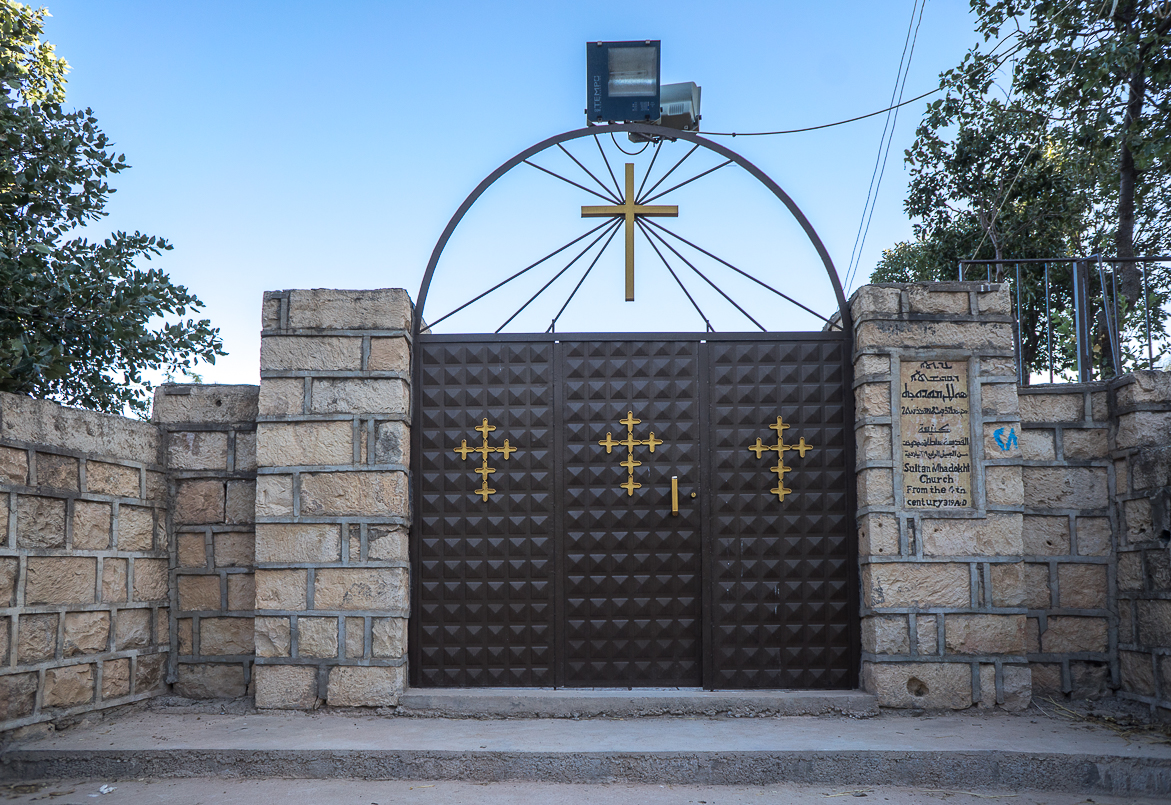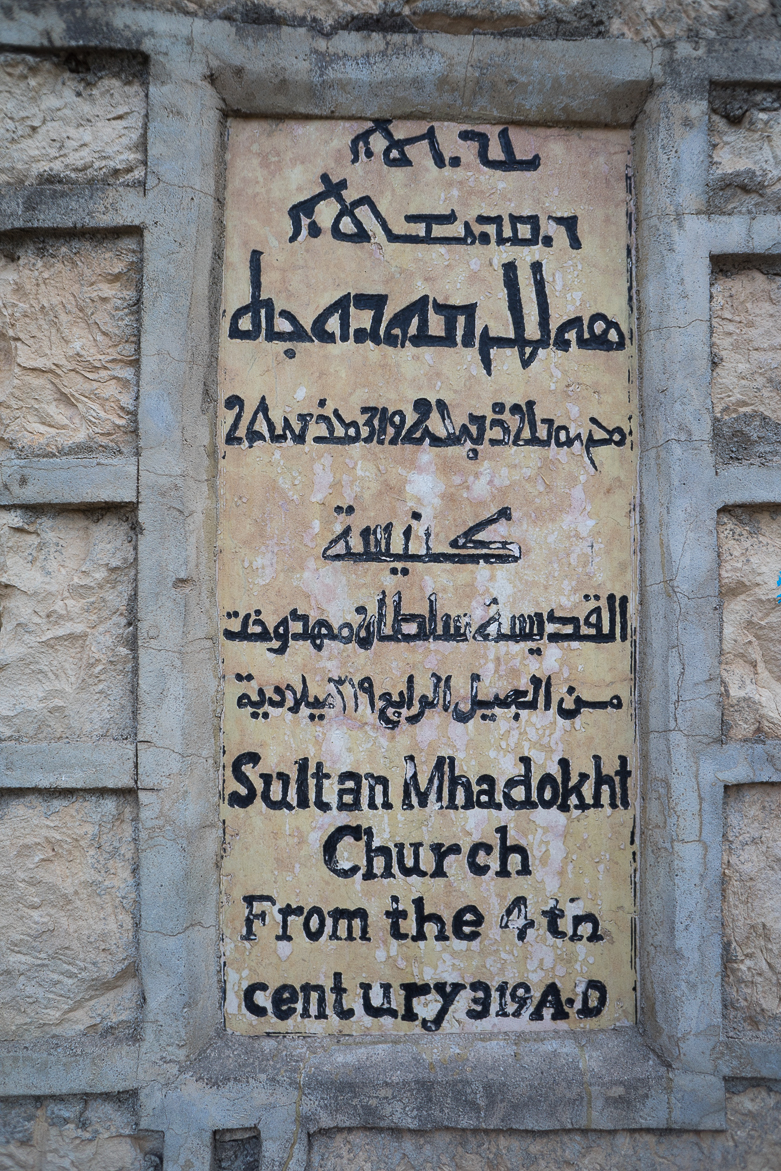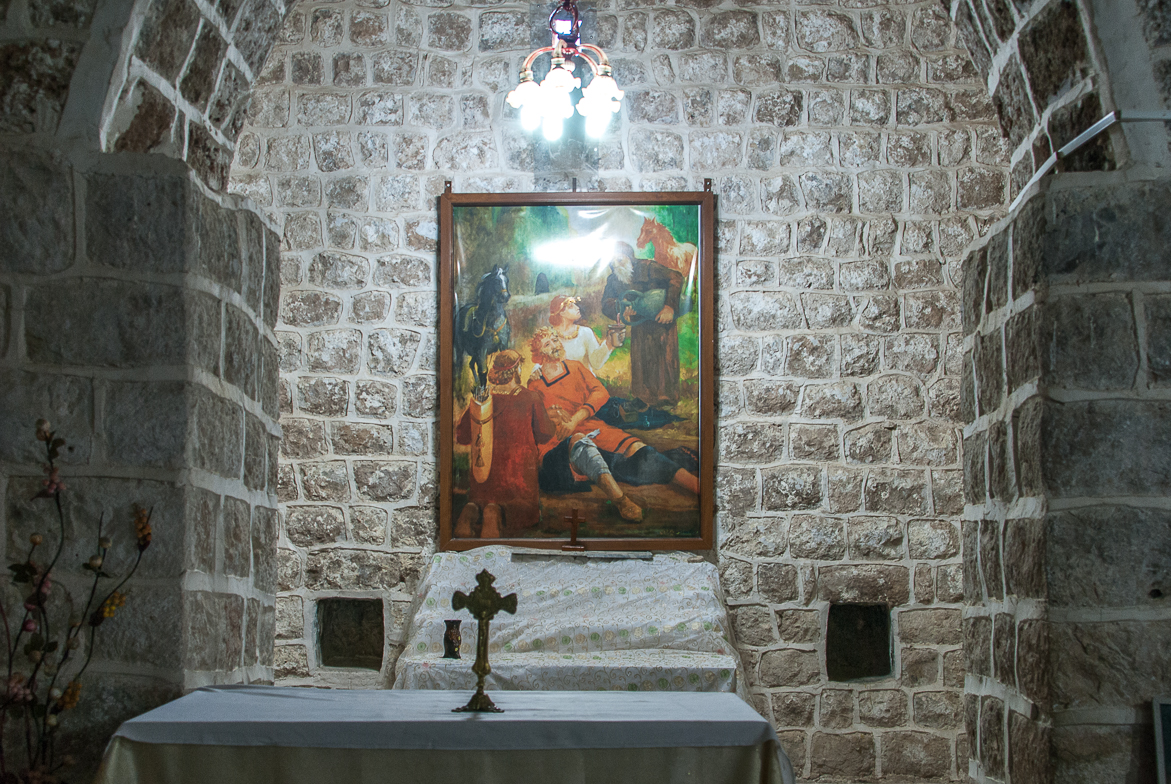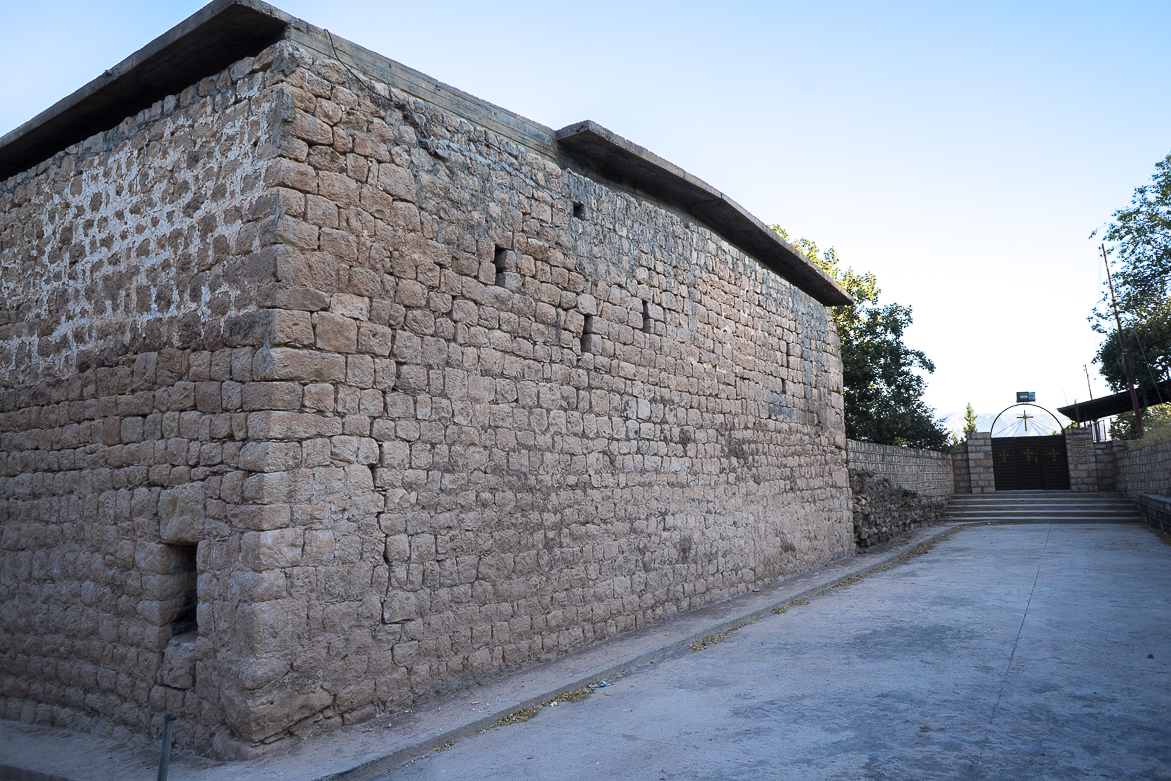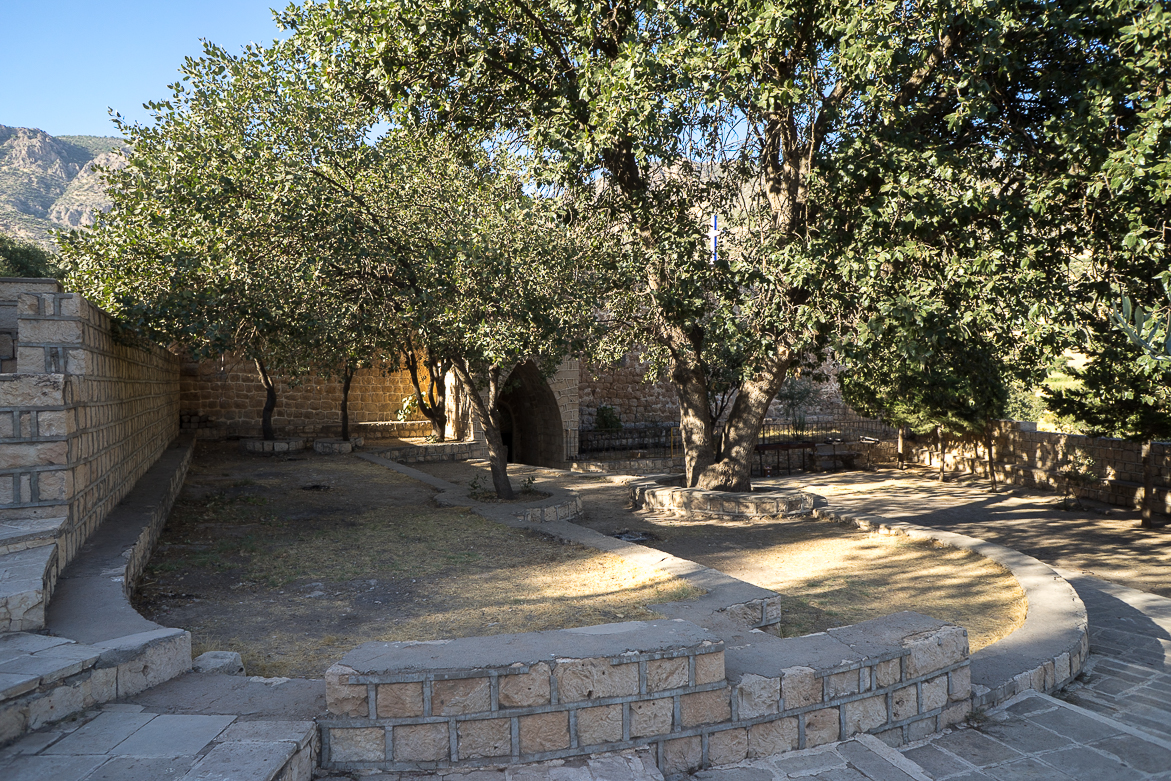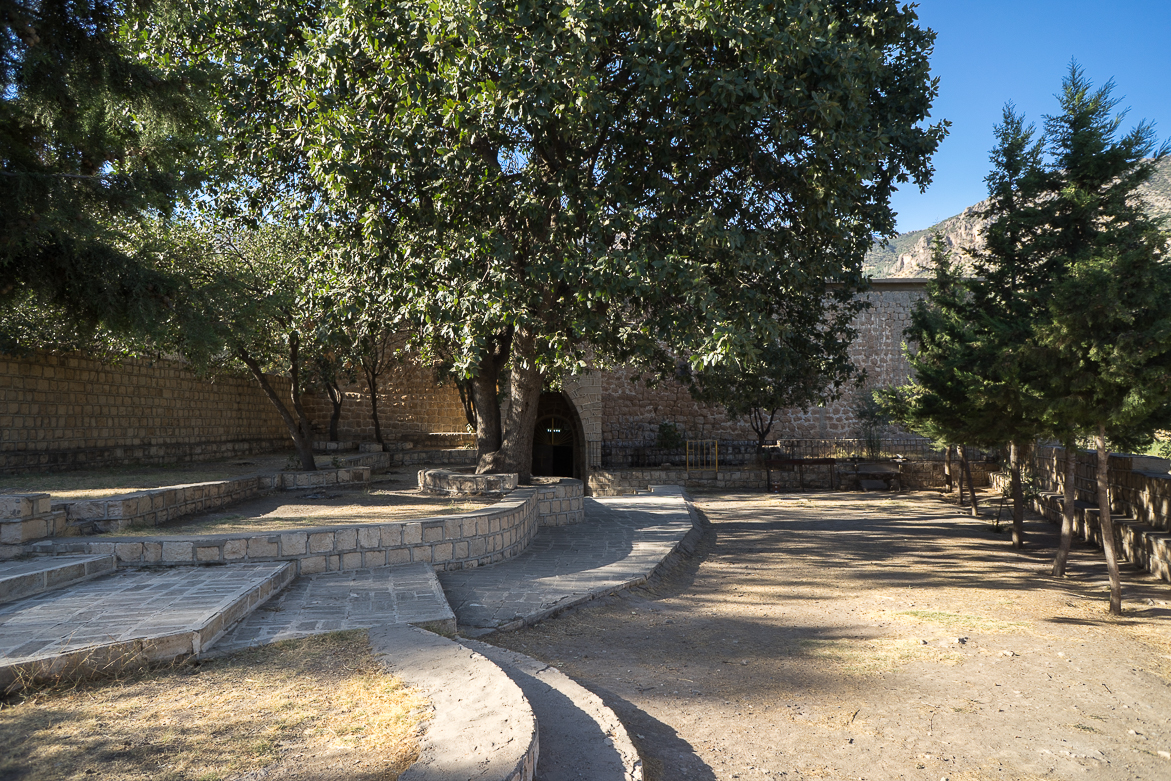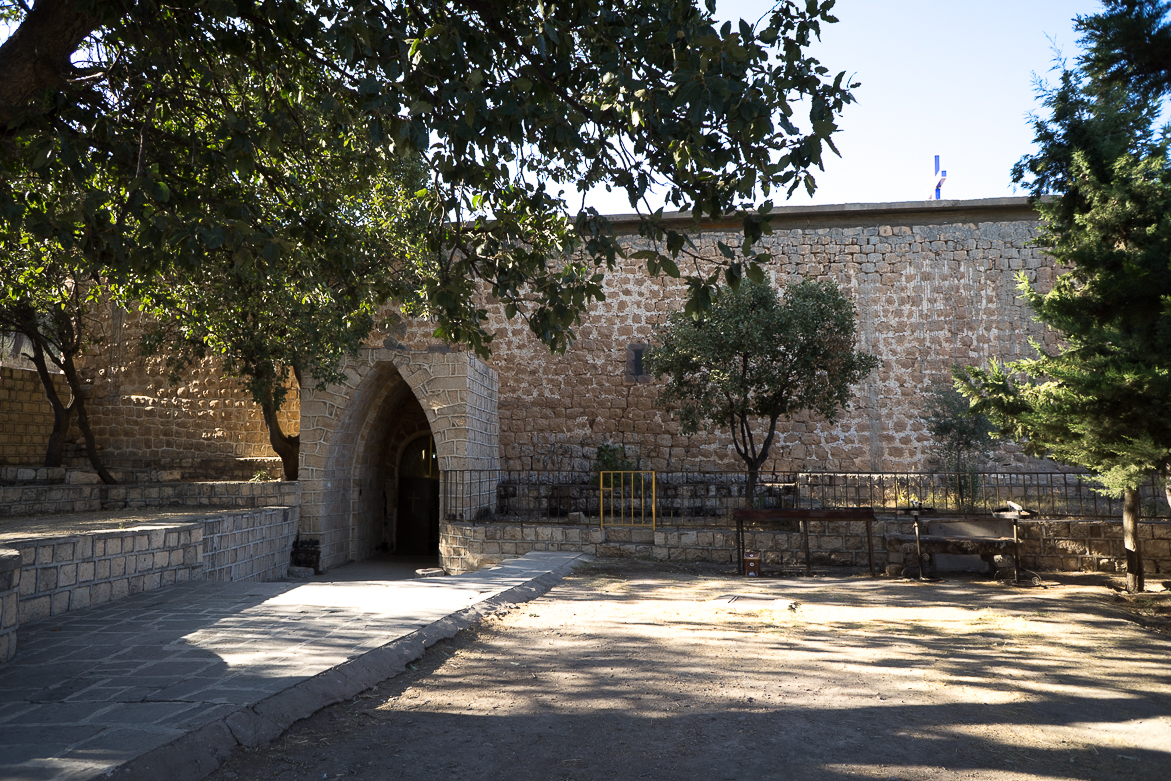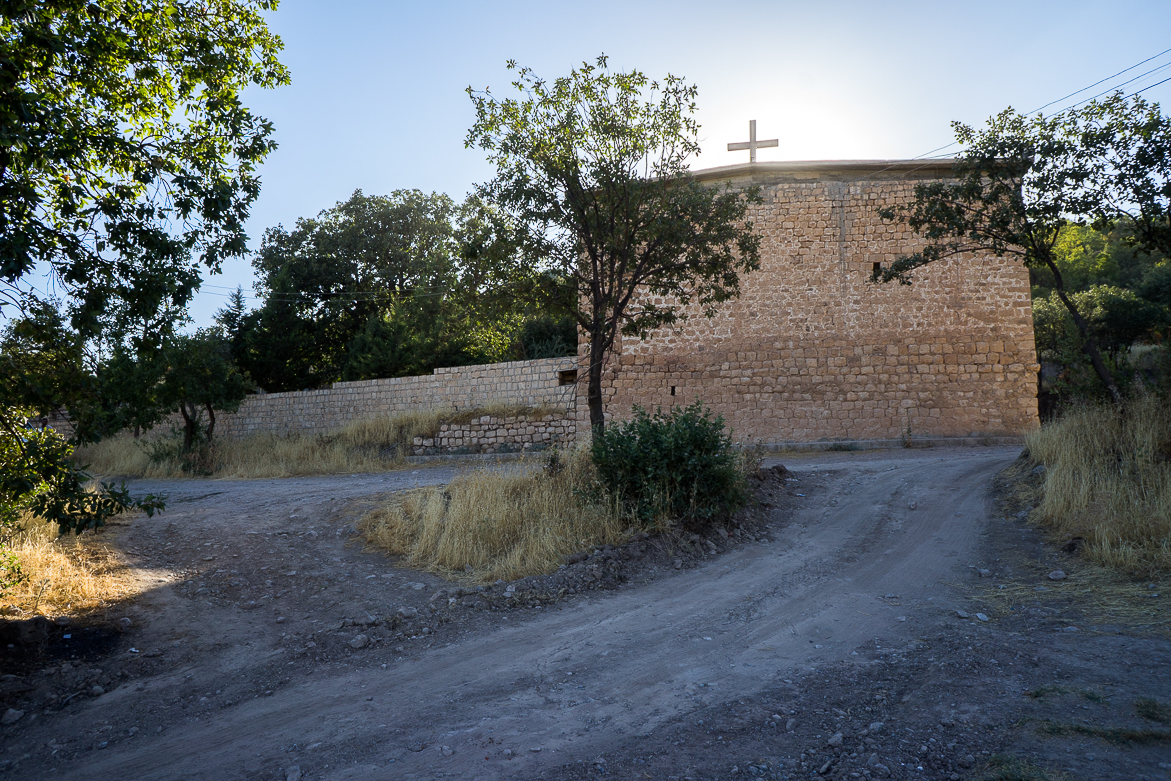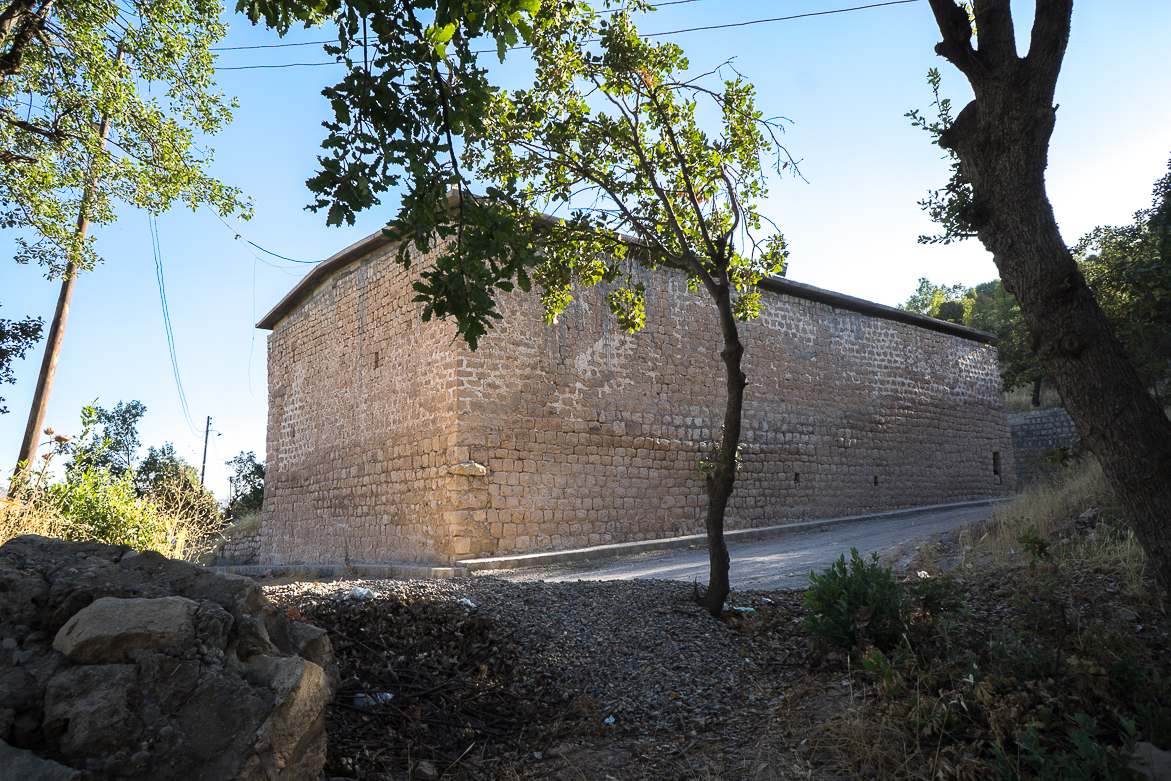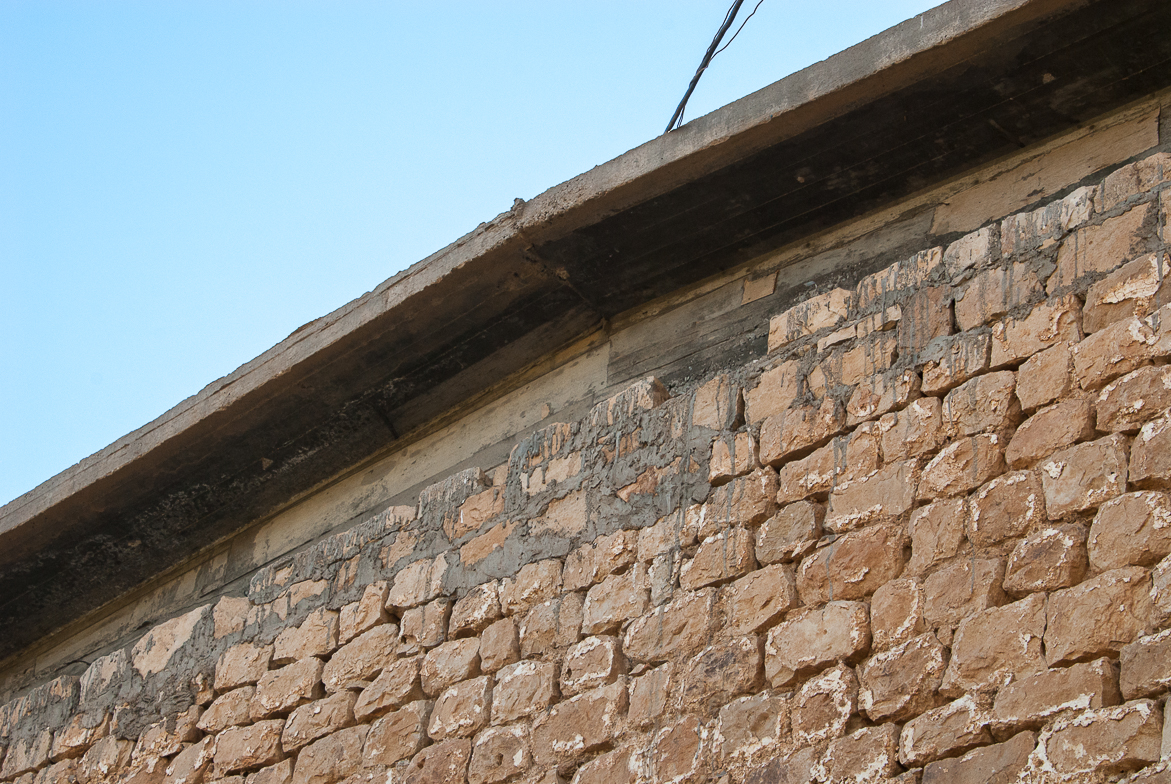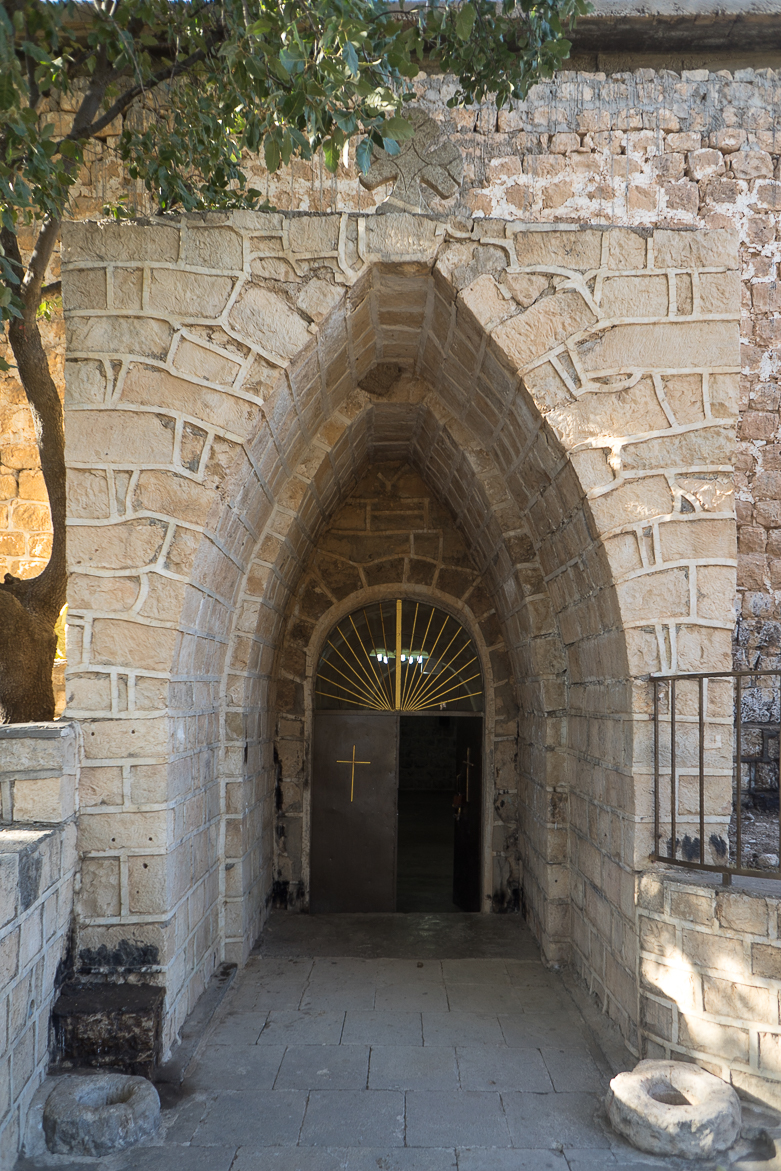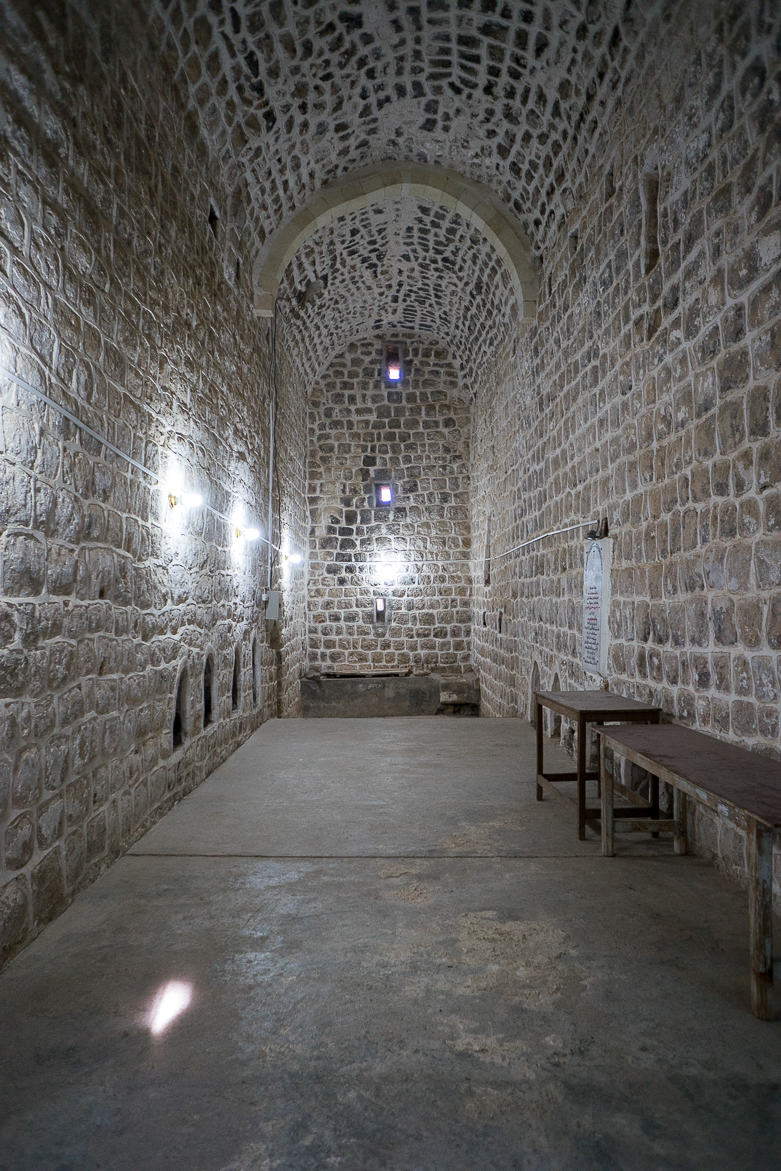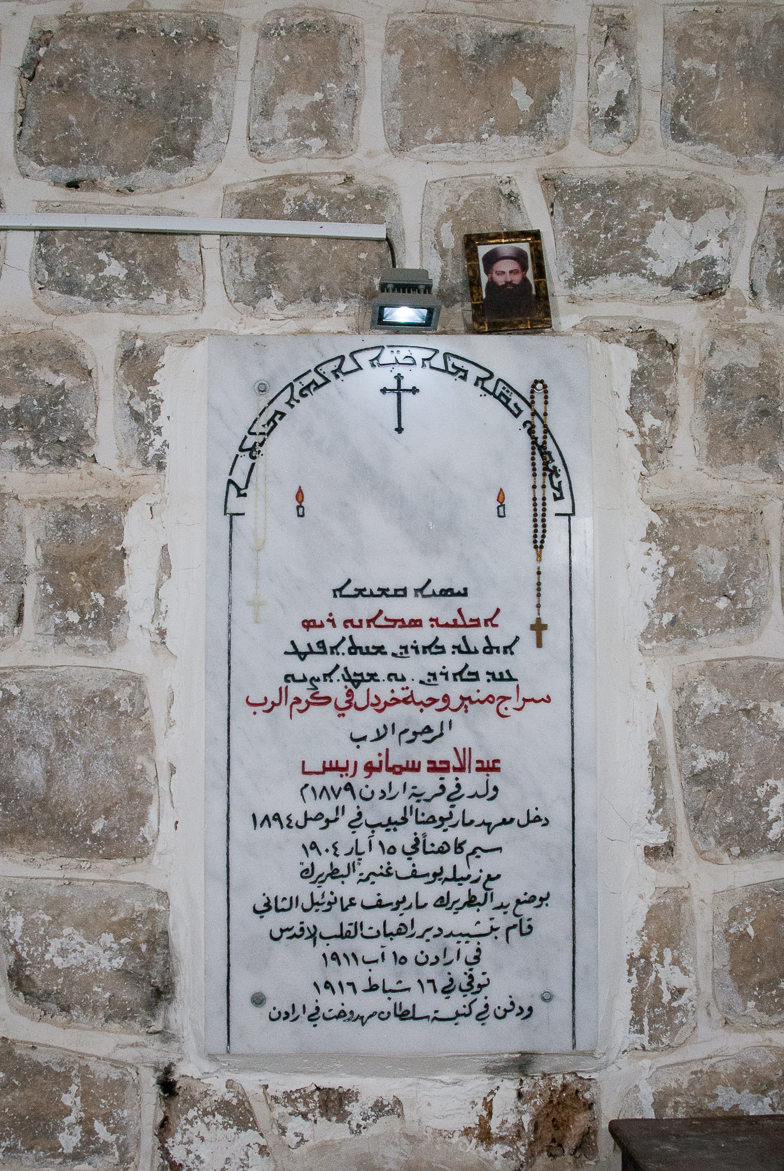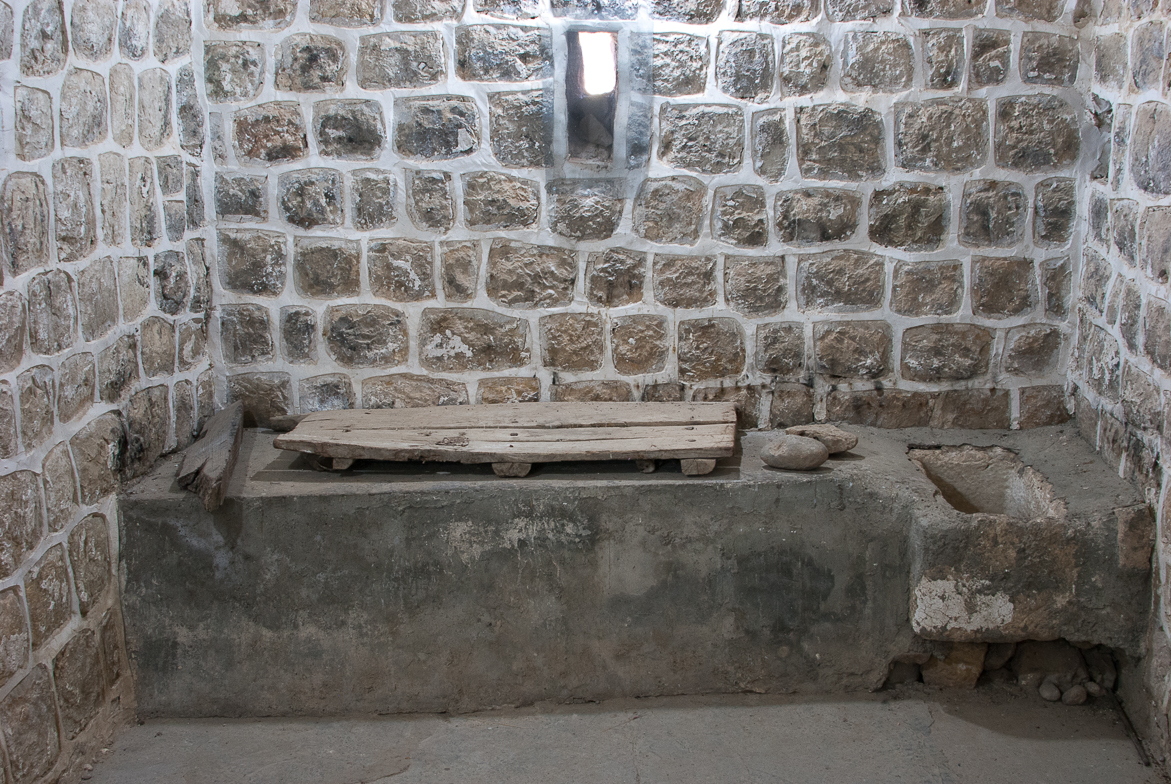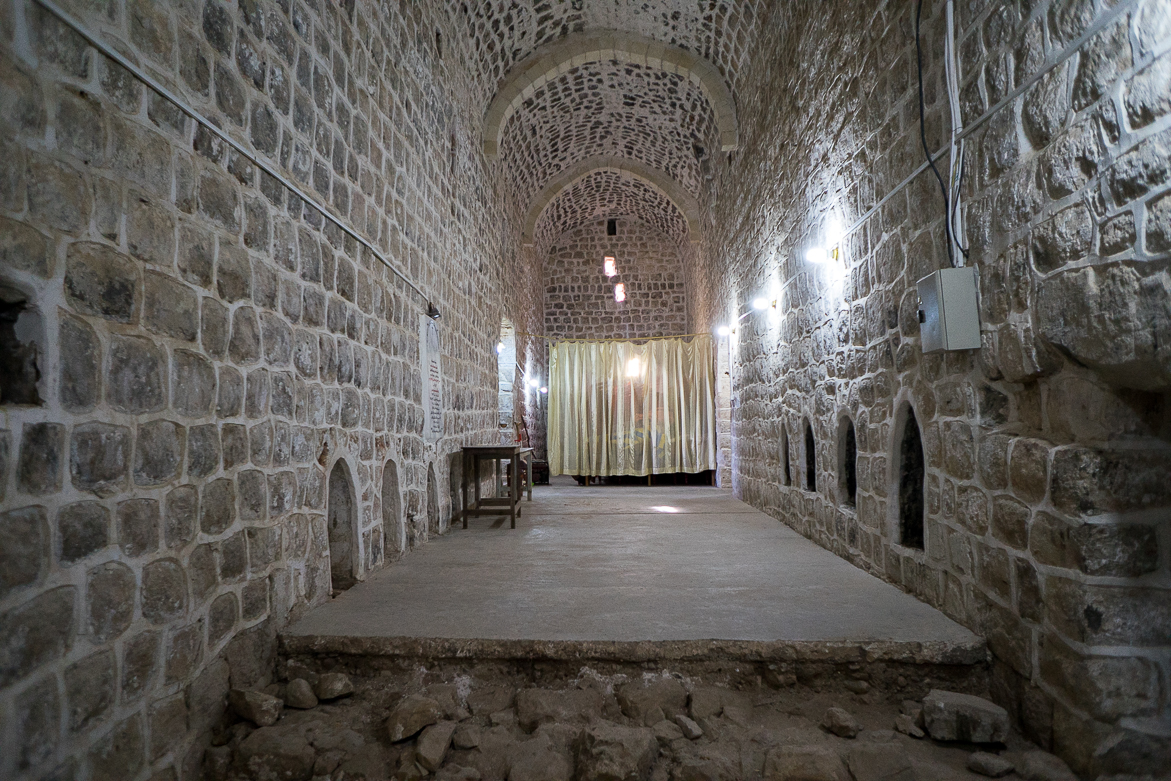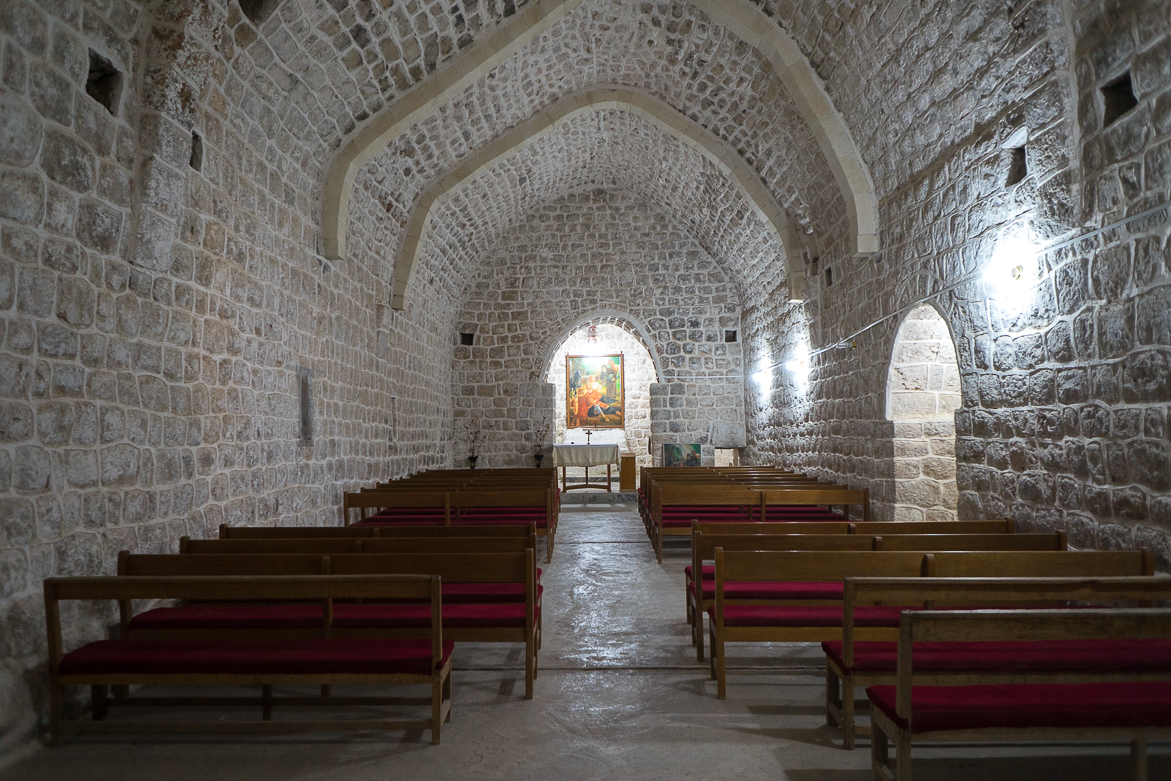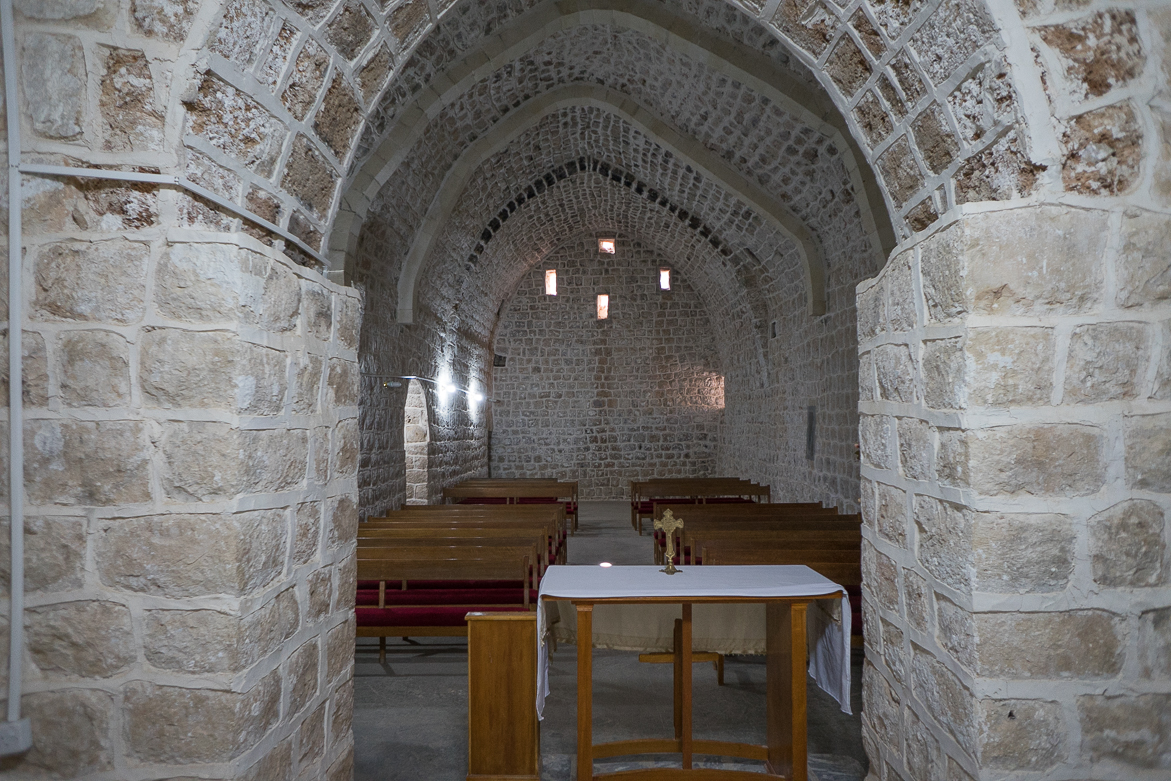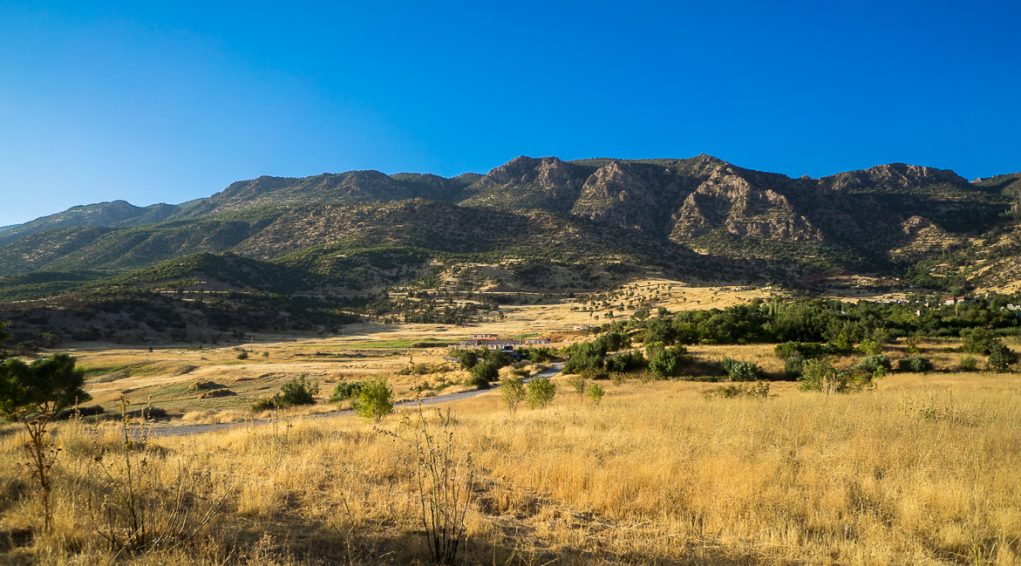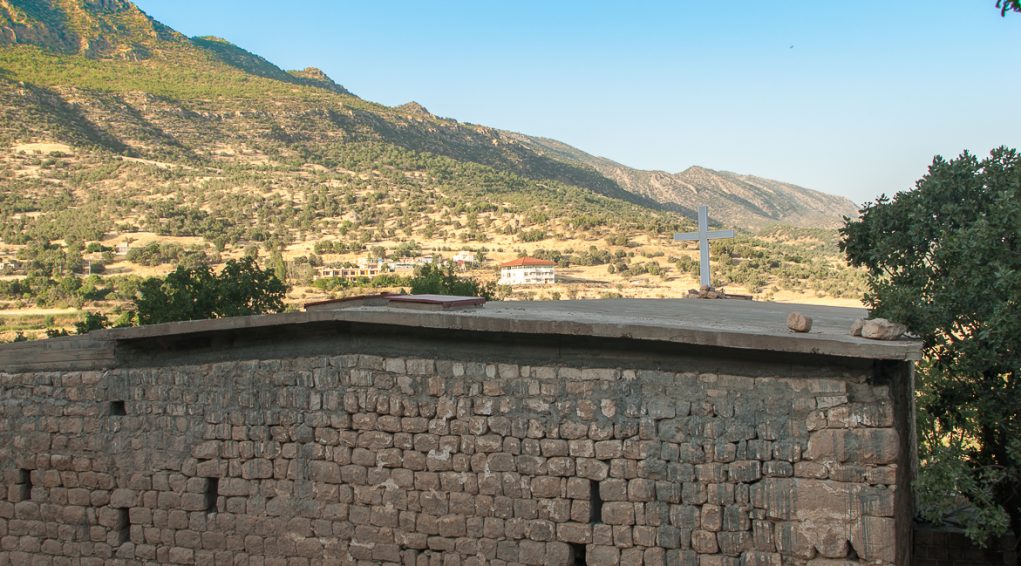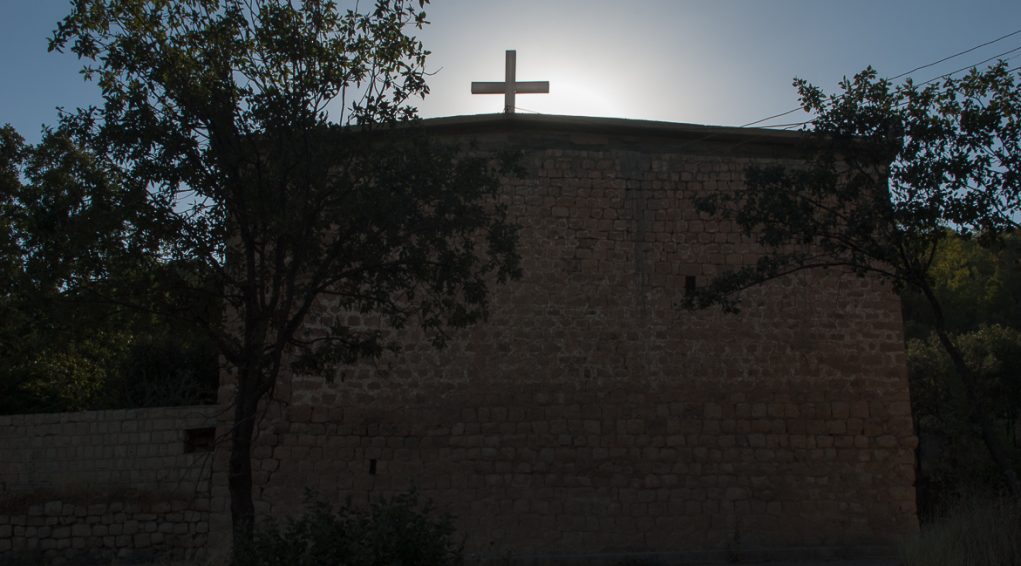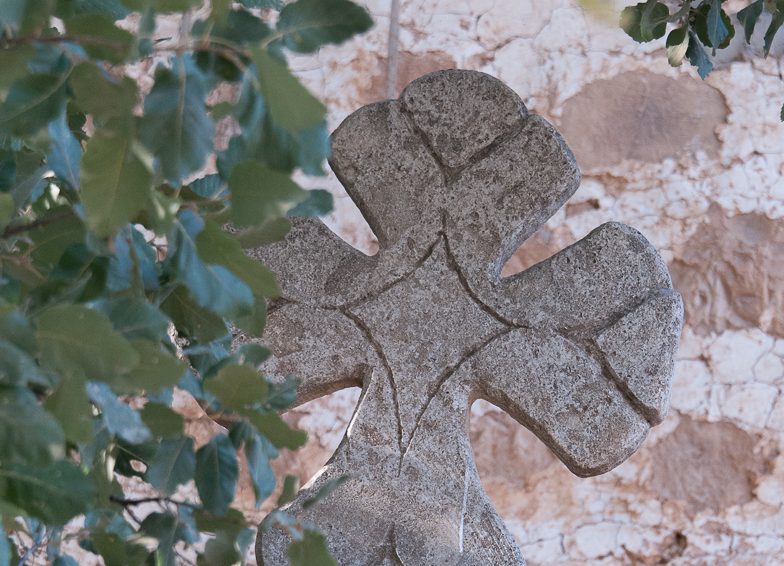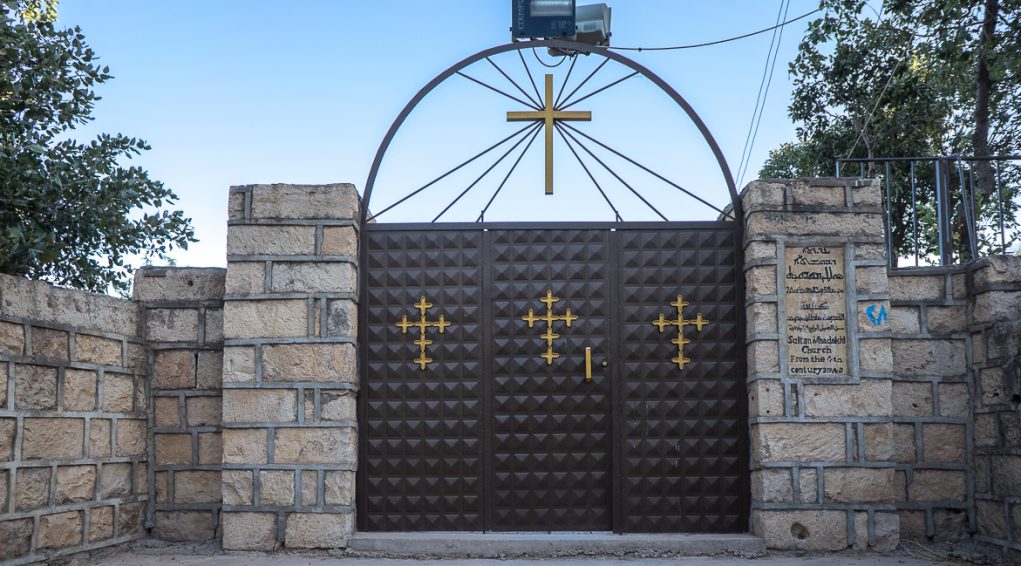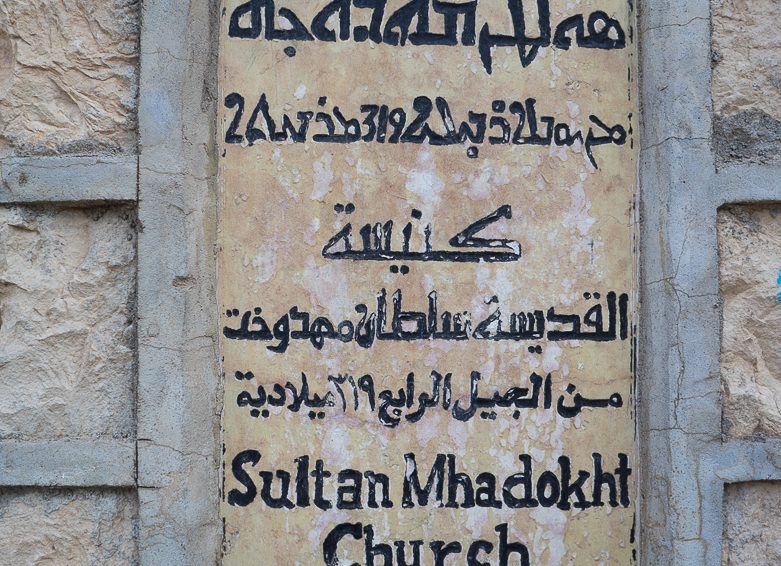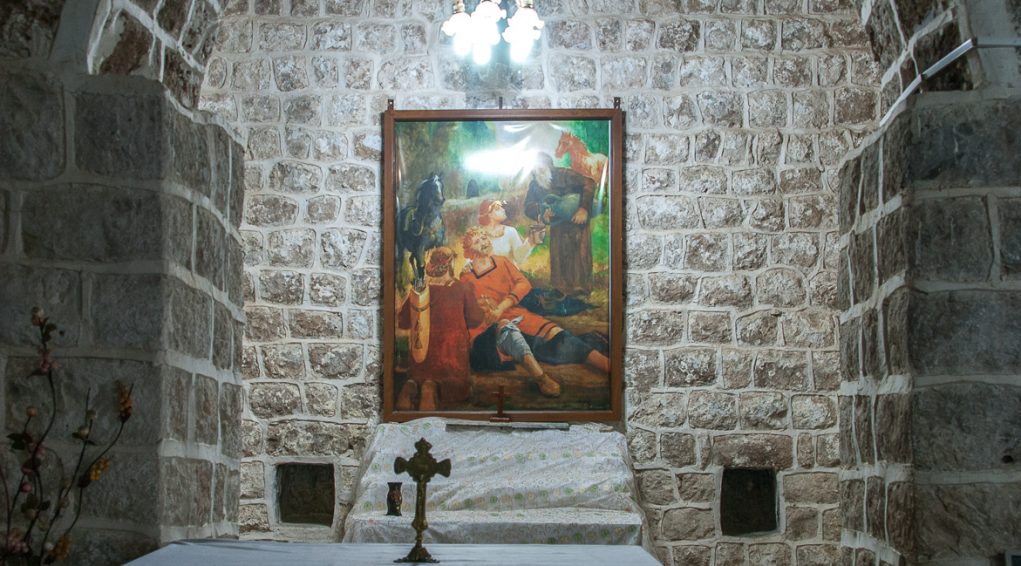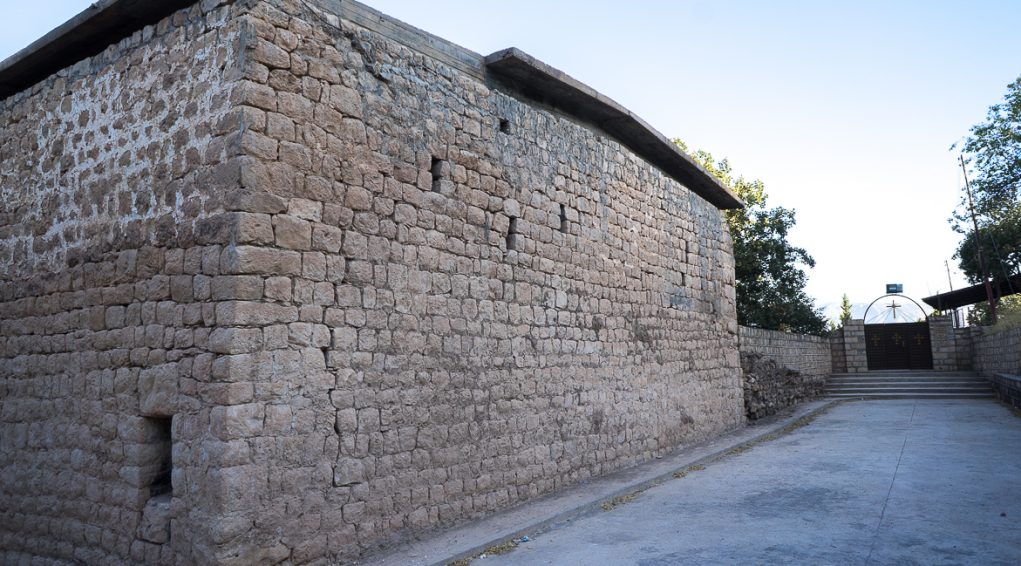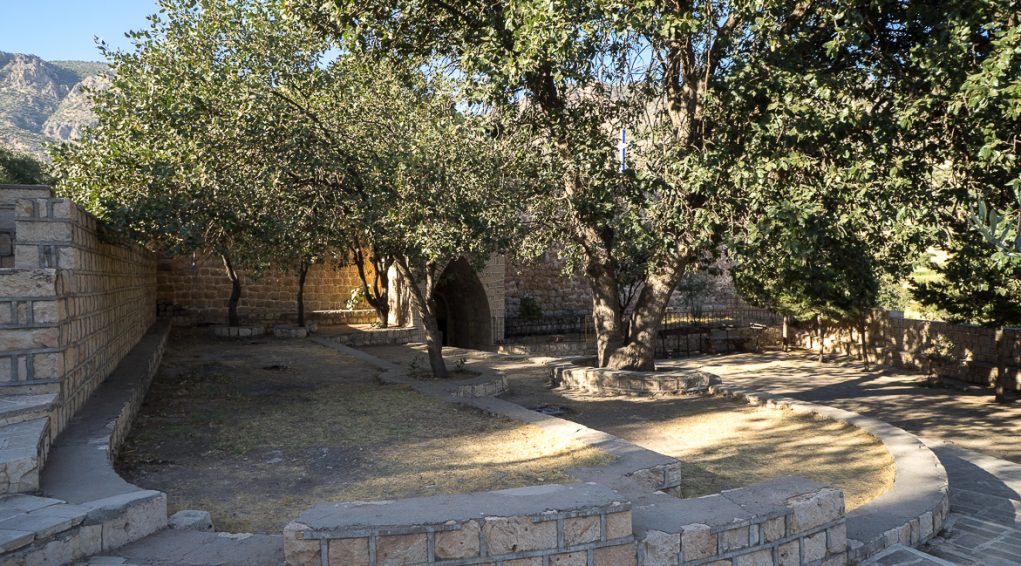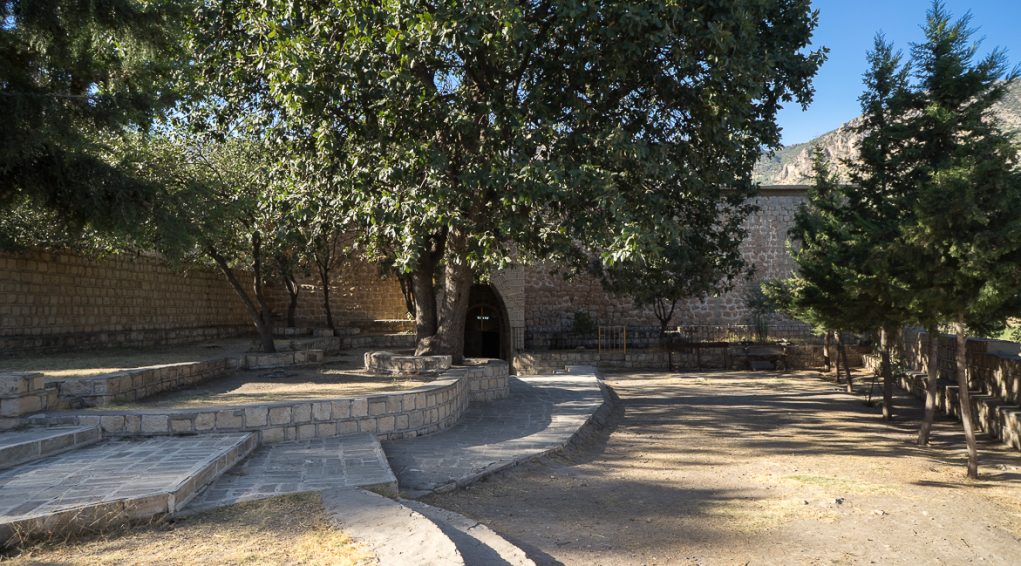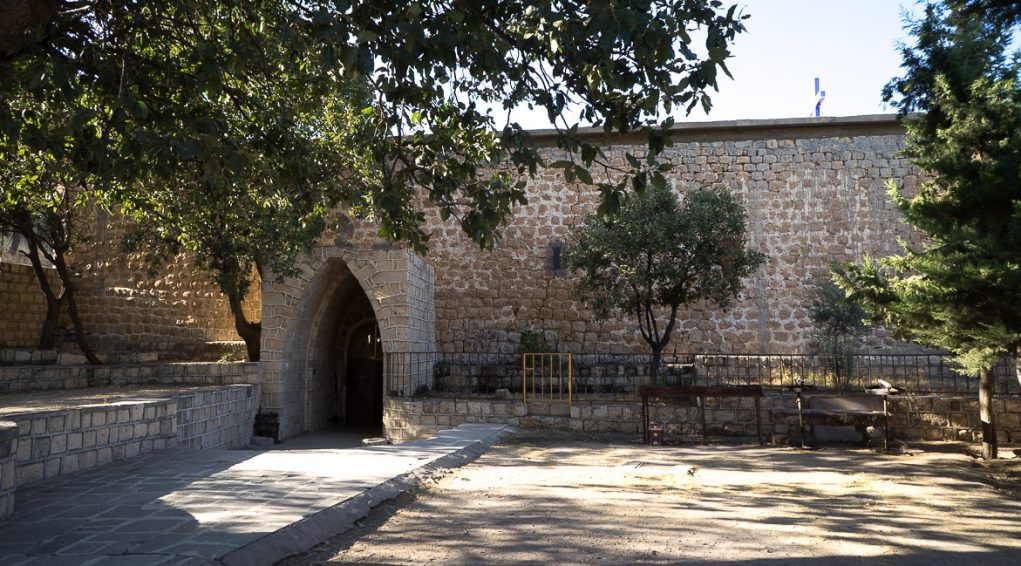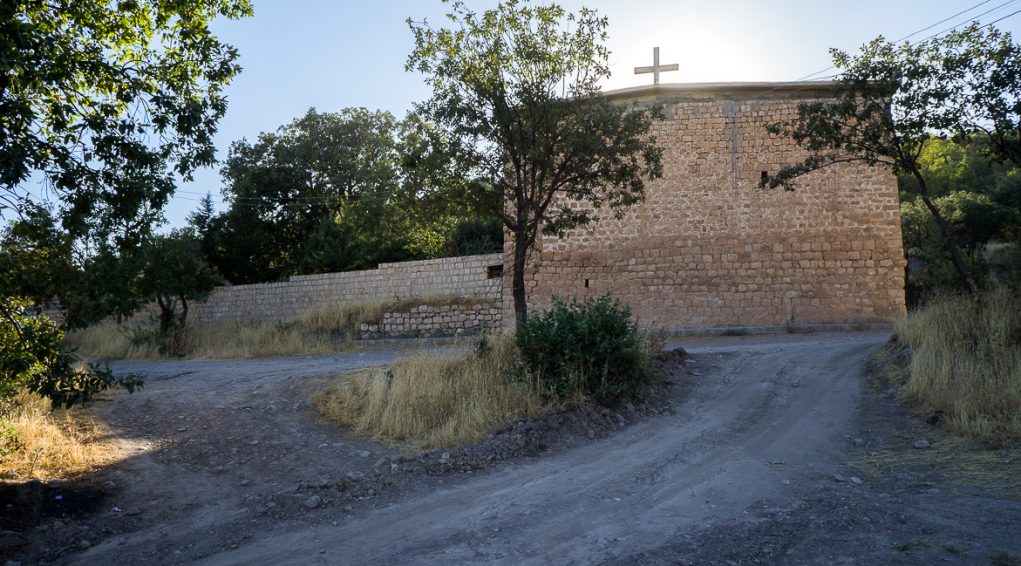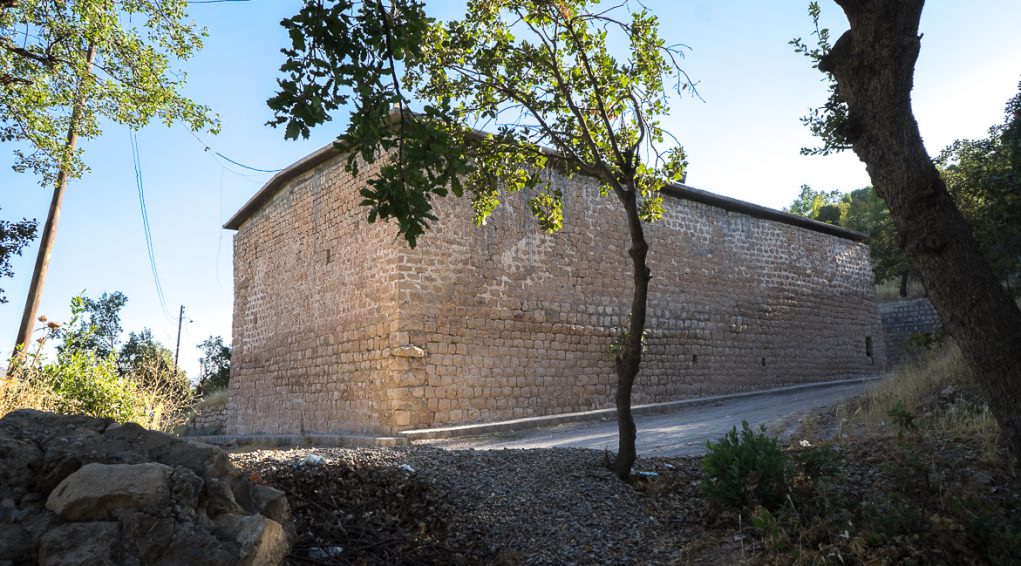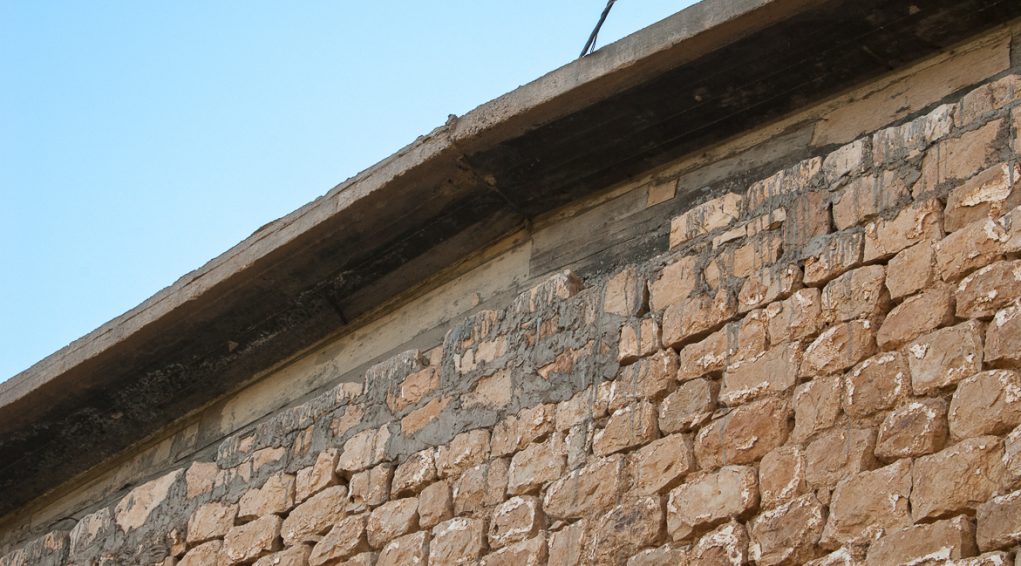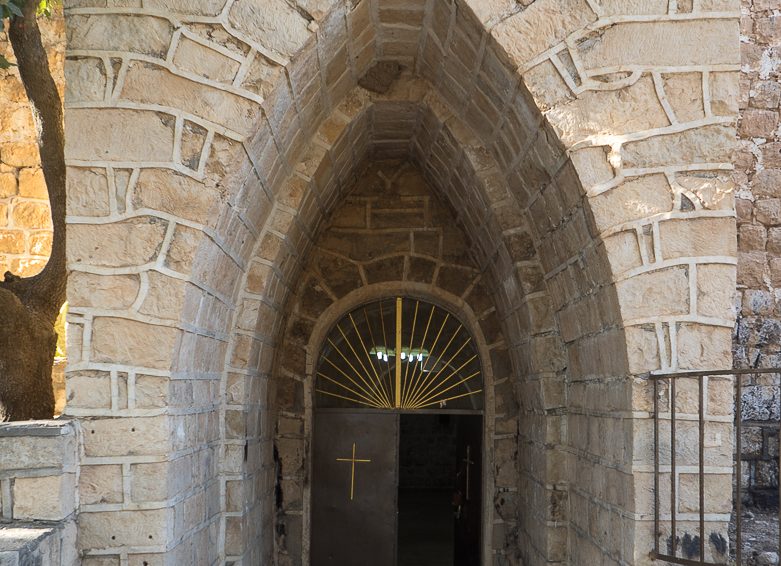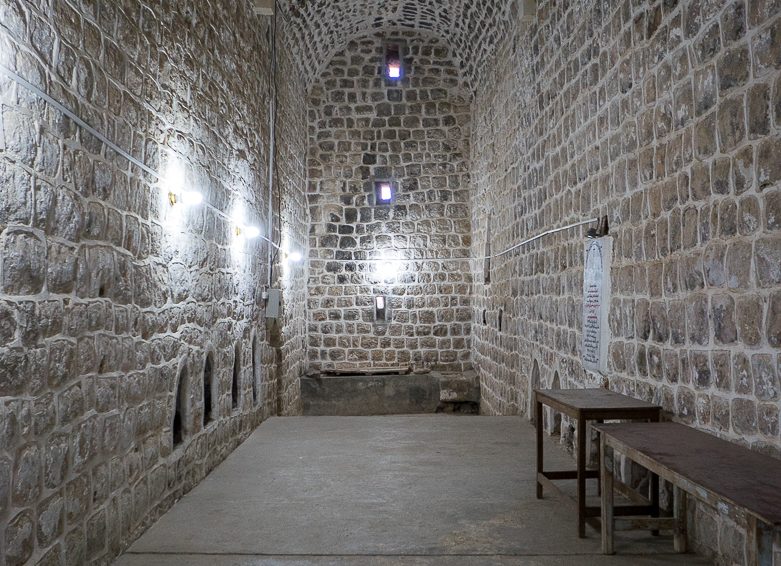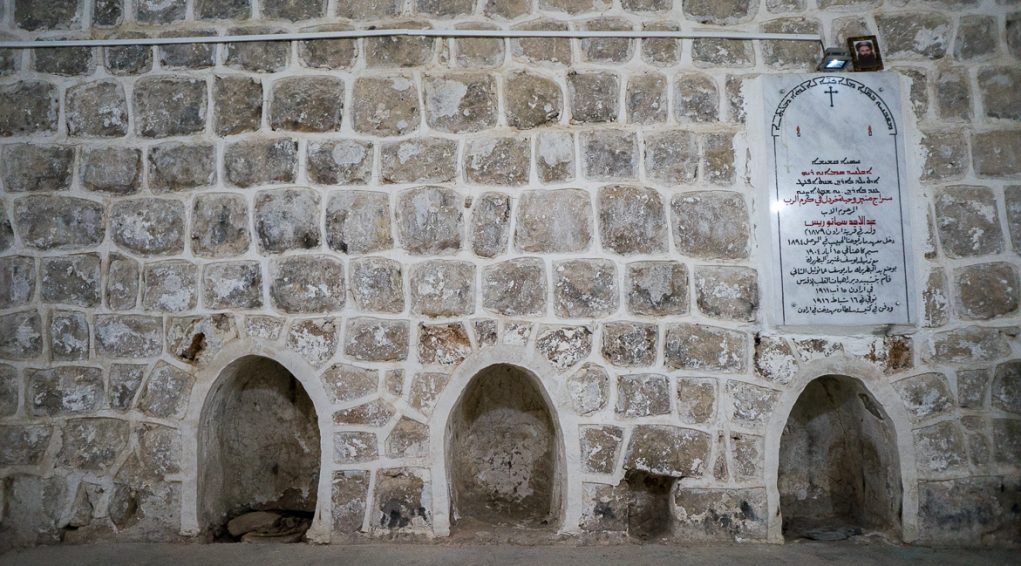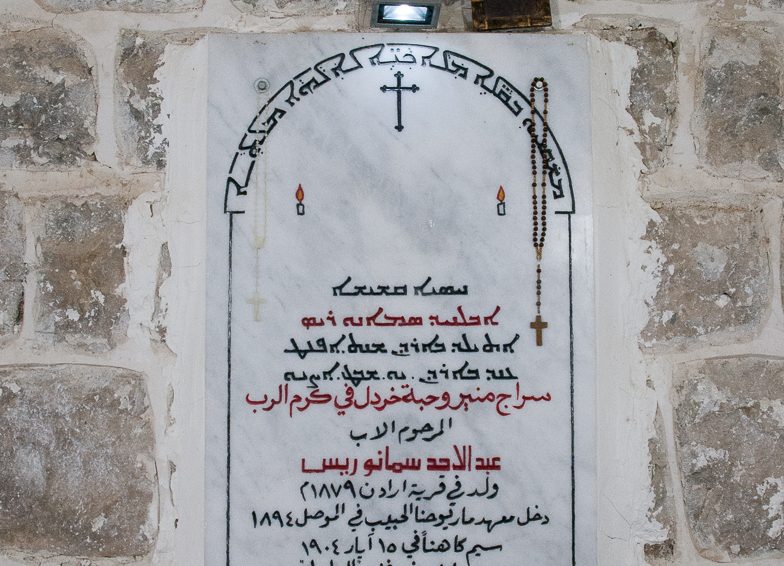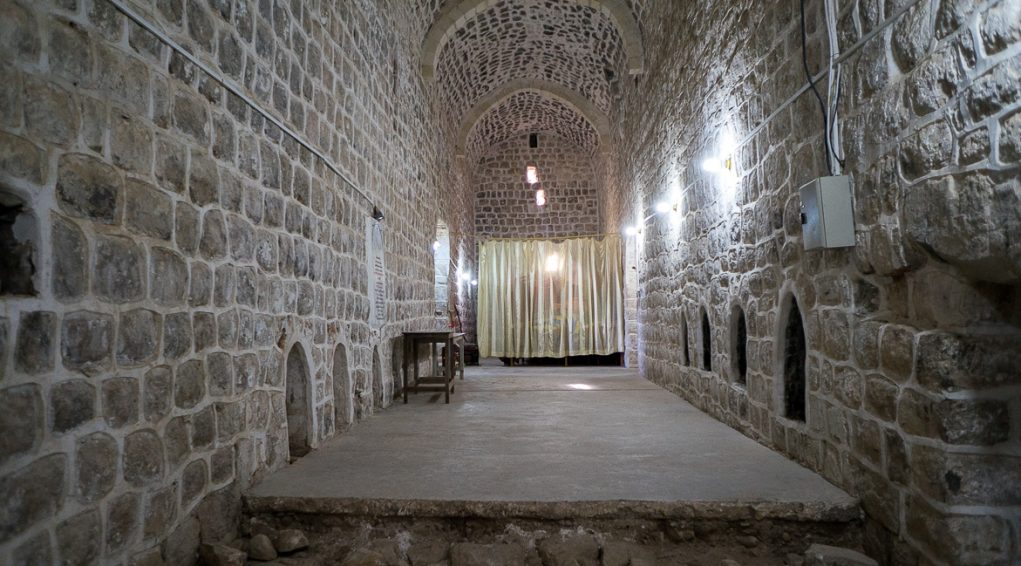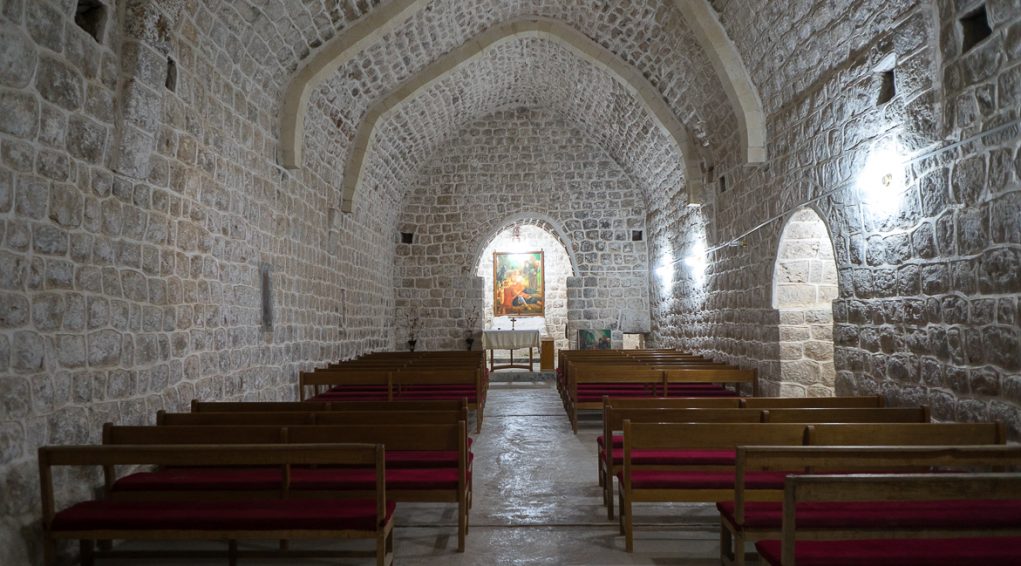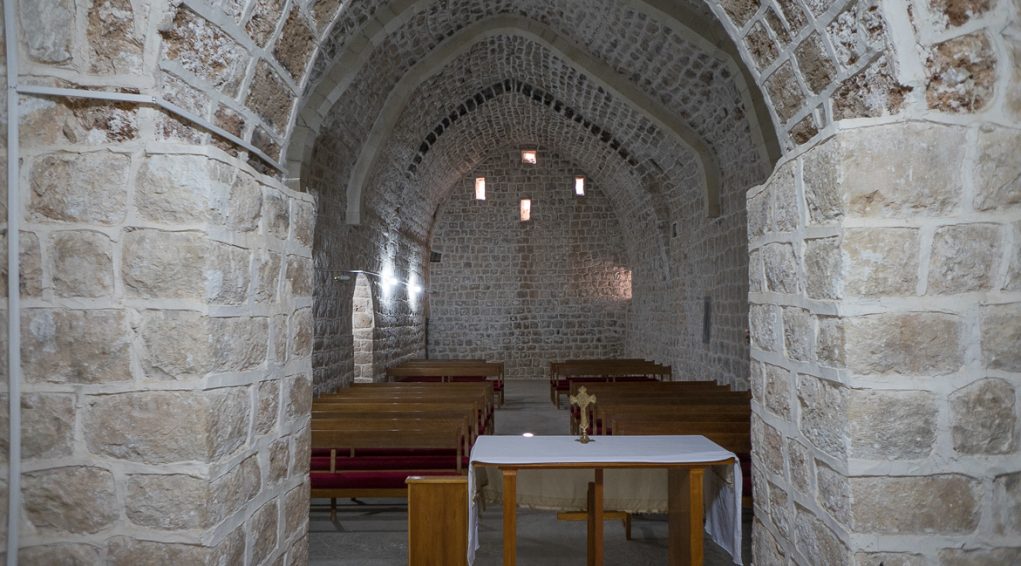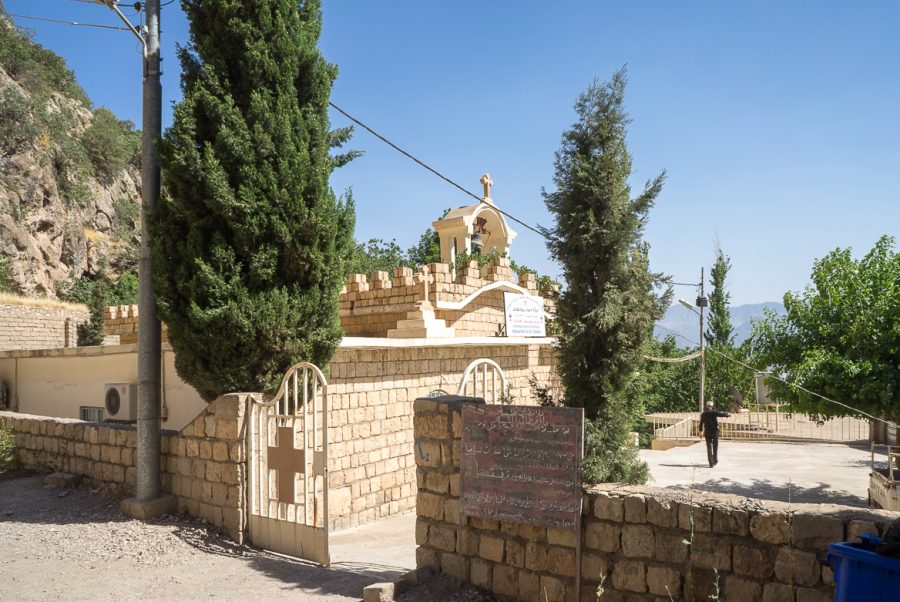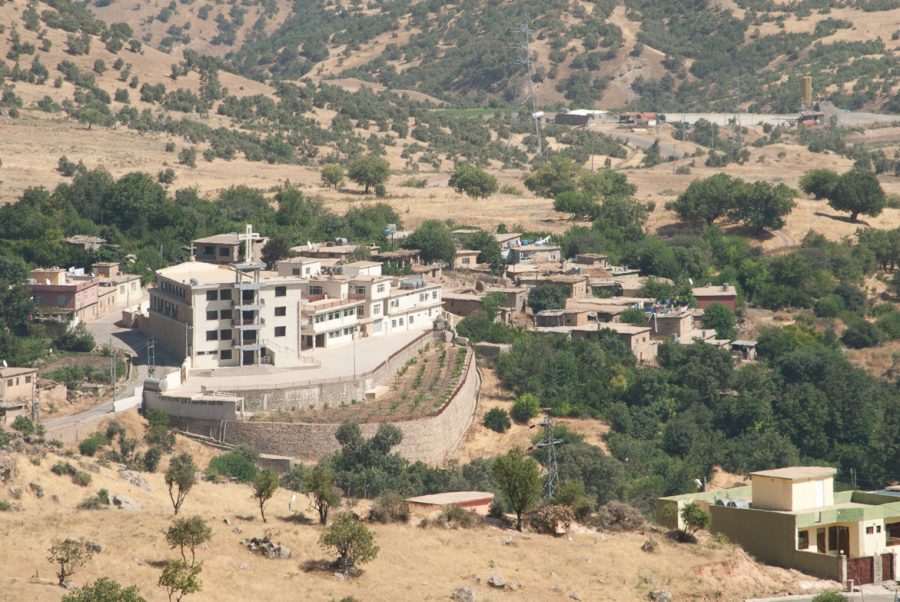Sultan Mahdokht Church in Araden
Sultana Mahdokht church stands in Araden (or Aradin), 37°06’12.6″N 43°19’03.3″E and 1120 metres high.
It lies in a small wooded valley 600 metres south of the village
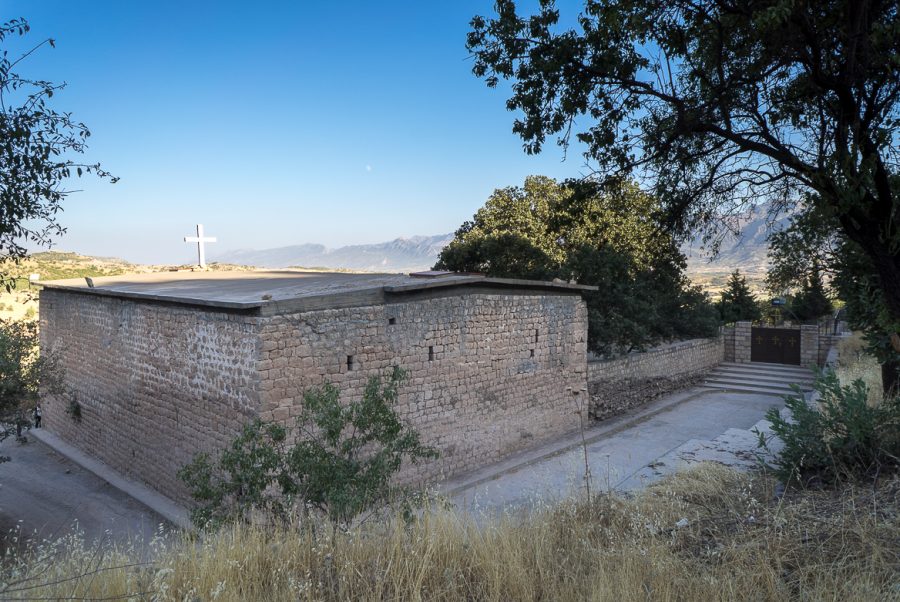
The Christianisation of Araden is very similar to that of other villages of the area: pre-existing Jewish presence and early evangelization under the influence of apostles Thomas, Addai and Mari. In the great book of martyrs of the Church of the East, saint Mahokht holds a special and important place in the 4th century, at the times of the Persian Sassanian king Shapur II, who was a great Christians’ persecutor. The tradition relates that the church of Sultana Mahdokht stands just where the dream of a pilgrim came true.
Location
Sultana Mahdokht church stands in Araden, 37°06’12.6″N 43°19’03.3″E and 1120 metres high. It lies in a small wooded valley 600 metres south of the village. Here is the heart of the Sapna valley, between the mount Chamatine up north which rises up to 3000 metres high, and the mount Kara up south which rises just as high. The site lies 21 km west from Amadiya and 75 km east from Zakho and 20 km south from the Turkish border. Araden is therefore a sensitive geopolitical area, but also a beautiful piece of land, where many fruit and nut bearing trees and non-fruit bearing trees flourish, where pastureland, gardens and rice fields spread nicely, irrigated by several water springs.[1] Literally, Araden means in Syriac language “Garden of Eden”, which says a lot about the beauty of the place.
In all the Christian villages along the Sapna valley, Araden is one of the most important. On an administrative point of view, it depends on the Dohuk governorate and from the district capital, Amadiya.
[1] See the work of Habib Ishow, Ar Aden ou le Jardin du Paradis. La terre et les hommes dans un village chaldéen du nord de l’Irak. In Études rurales n°76, 1979, pp 97-112. To be read (in French) on the website http://www.persee.fr/doc/rural_0014-2182_1979_num_76_1_2535
Fragments of a Christian history
The Christian history of Araden is very similar to that of other villages of the area[1]: pre-existing Jewish presence and early evangelization under the influence of apostles Thomas, Addai (can also be the apostle Jude, also known as Thaddeus in the Gospel) and Mari. Throughout a 4th century full of vocations, the tradition relates many stories of martyrs persecuted by the Persian king Shapur II. And all along these times of the first Christians, hermitages and primitive sanctuaries developed, at the very same place where Assyrian churches and monasteries progressively raised.
Throughout the centuries and until the fall of the Ottoman Empire, the valleys and the mountains which edge this part of Mesopotamia were a place of flourishment and protection for the Church of the East, on both sides of the nowadays Iraq-Turkey border. At the same time, from the 17th century on and even more from the 18th century, Catholic missions developed.
This is how the inhabitants from Araden turned from the Church of the East to the Catholic Chaldean Church. The village itself became a place of residence for the Chaldean bishopric[2]. In 1913, there were 650 Chaldeans in Araden[3]. From the 17 villages in the diocese of Amadiya, Araden was the second most important in population, after Manguesh but before Tena and Amadiya. This community and religious environment collapsed at the end of the 19th and beginning of the 20th century, with the Kurdish persecutions, the application of Seyfo[4] by the Young Turk government and the breaking up of the Ottoman Empire.
During all the rest of the 20th century, and although the Iraqi administration took the lead from 1921, the Chaldeans had no break. In 1957 Araden still reported 1049 inhabitants, and before 1961 the village counted 200 homes for more than 350 families[5]. Despite this large population, the zone was evacuated and the access was even officially prohibited between 1961 and 1970 because of the war.
In 1971, around 80 expulsed families from Araden[6] came back to the village, but in 1975, the war started again and forced most inhabitants to flee once more. And this situation happened again in the 80s. Even worst, in 1988, Araden was one of the many villages totally bombed out by the Baathist regime of Saddam Hussein. Hopefully, the churches of Araden, including Sultana Mahdokht church were spared, “thanks to the efforts of a few people who managed to negociate with the army” [7]. After the end of the first Gulf War and after new persecutions against Christians committed by Islamist or mafia organisations, the old people from Araden came back in 1988, for yet another time, with their children and grandchildren. They started rebuilding their village under the protection of the regional government of Iraqi Kurdistan, with the active support of the great Assyrian donor Sarkis Aghajan and the participation of several international organisations for cooperation and development. The inhabitants who live nowadays in this Garden of Eden however have to face economic and social problems which encourage them to leave, not only within the national Iraqi borders, but now exclusively abroad.
[1] Refer to the note on Mar Kuryakos in Kani. Index C042.
[2] In L’Église chaldéenne catholique, autrefois et aujourd’hui, Abbé Joseph Tfinkdji, 1913, Extract from the Annuaire Pontifical Catholique from 1914.
[3] Id.
[4] Seyfo is the Syriac name for the Assyrian Chaldean and Syriac genocide in the Ottoman Empire in 1915-1918.
[5] http://www.ishtartv.com/en/viewarticle,35349.html
[6] Id. note 1
[7] Extract from a testimony, in Chrétiens d’Orient, ombres et lumière, Pascal Maguesyan, éd.Thaddée, 2013, p.276.
Fragments of a hagiography
In the great book of martyrs of the Church of the East, saint Sultana Mahdokht has an important place[1]. This story goes back to the 4th century at the time of the Persian Sassanian king Shapur II, who persecuted many Christians. The tradition relates that the prince Pholar and his three children, Mahdokht, Adorfrowa and Meharnarsa decided to go and visit the king who was then staying in Kirkuk. On their way back, as they were approaching the village of Ahwan, Meharnarsa fell from his horse and broke his leg. Passing by, the bishop of Karbat-Jalal, Mar Abda, came to rescue the poor young man and healed him miraculously. Mahdokht, Adorfrowa and Meharnarsa then chose to convert to Christianity. Mar Abda baptized them and they all three, again miraculously, vanished in a nearby cave.
Having been informed by this triple disappearing, Shapur II ordered searches which all remained vain. From this day, the 3 siblings were considered as saints. One day, Prince Pholar’s horse ran away, and made his way to the mysterious cave and discovered the disappeared children, who were later taken to the king. Shapur II succumbed to Mahdokht’s charm and wanted to marry her. She refused and was beheaded on October 2nd 318. Her brothers had also been beheaded, just before their sister. The tradition also relates that the executioner had his arm totally paralysed at the idea of killing Mahdokht but she herself healed him before he actually beheaded her.
Today, Sultana Mahdokht church in Araden is considered as the tomb of the 3 saint siblings. People come here for pilgrimages on October 2nd and also on December 12th, and even for the Assumption Day. In September, a day of devotion is organised on Mar Abda’s tomb, near a water spring and a rock, north east of Araden, at the place where Mahdokht and her brothers are supposed to have been baptised.
[1] The hereafter exposed elements are extracted from a synthesis of Sultana Mahdohkt’s hagiography made by Narmen Ali Muhamad Amen, in his PhD thesis : Les églises et monastères du « Kurdistan irakien » à la veille et au lendemain de l’islam, under the supervision of Georges Tate and co-supervision of Jean-Michel Thierry, May 2001, p.171-174.
Church’s description
According to the tradition, Sultana Mahdokht church stands where the dream of a pilgrim came true. Before he fell asleep, he had found, without knowing it, a bone of the saint’s arm. During the night, the saint appeared to him and asked him to let go his horse. Wherever the horse would stop, there, a sanctuary should be built. And that is what he did on the following morning.
The original building was said to have been raised “in rammed earth, mixed with ewe’s milk[1]”. The church of nowadays is not of course the primitive church. Several steps of restoration have been completed, and yet until very recently. The last one was realised by Mgr Rabban al Qas, Chaldean bishop of the diocese of Dohuk.
Sultana Mahdokht church stands nowadays close to a terraced garden, closed by a surrounding wall, with three entrance porches, next to a cemetery in a small wood where hundreds of years tombs are still visible.
A small porch, surmounted with a stone adorned with a flowery cross opens onto the sacred place. The church itself consists in two adjoining 24-meters long chambers[2]. The first chamber is a simple nave, made out of cut stone, with a barrel vault, and its walls some niches show the existence of ancient tombs. At the end of this chamber stands a baptismal font.
The second chamber is the church itself, and its structure is very similar to the first one’s. However, at the end of this one, a double altar stands. The first one is right under the semi-circular arch of the royal gate. It is a typical altar from the liturgical Catholic tradition, facing the worshippers, heritage from Vatican II. The second one is an altar with steps on top of it, backed onto the eastern wall, typical of the original liturgical tradition of eastern churches, with the celebrant turning his back to the worshippers and facing the Levant.
The whole building is topped by a reinforced concrete terraced roof, surmounted by a Latin cross.
« Beyond the church needs to be mentioned Sultana Mahdokht’s cave, on the road to Araden. It consists in one room, carved out in the rock, 2 metres high and about the same wide. The ceiling is curved and at the foot of each wall are two little wooden beds, about 75 cm high. At the head of each lay some reliefs, featuring like pillows. Each bench is carved in the wall under the arch (…)[3] ».
[1]In Les églises et monastères du « Kurdistan irakien » à la veille et au lendemain de l’islam, Narmen Ali Muhamad Amen, PhD thesis under the supervision of Georges Tate and co-supervision of Jean-Michel Thierry, May 2001 p.173.
[2] La côte est de Narmen Ali Muhamad Amen et n’a pas été vérifiée après la dernière étape de rénovation.
[3] Id. note 10, p.174
Monument's gallery
Monuments
Nearby
Help us preserve the monuments' memory
Family pictures, videos, records, share your documents to make the site live!
I contribute